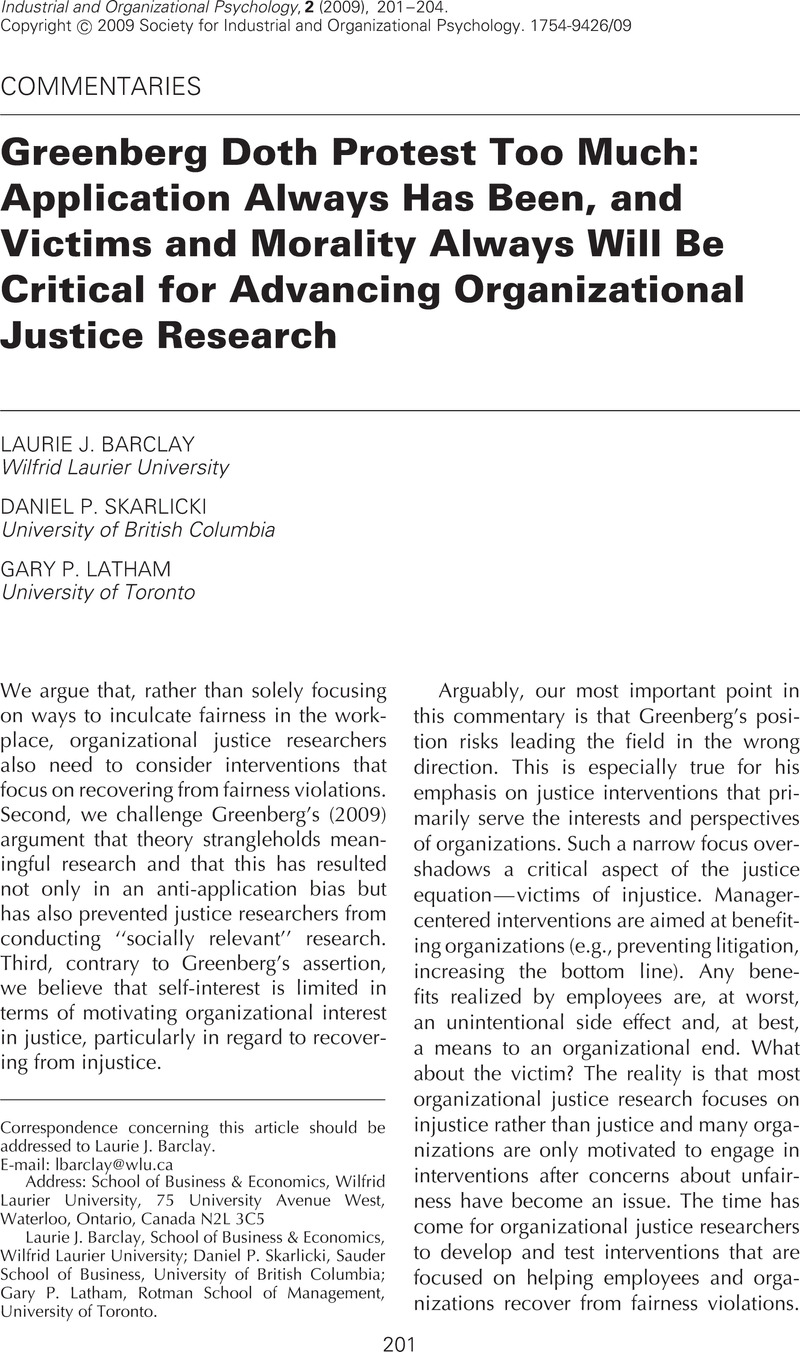Crossref Citations
This article has been cited by the following publications. This list is generated based on data provided by Crossref.
Greenberg, Jerald
2009.
Applying Organizational Justice: Questionable Claims and Promising Suggestions.
Industrial and Organizational Psychology,
Vol. 2,
Issue. 2,
p.
230.
Okimoto, Tyler G.
and
Wenzel, Michael
2011.
Third-party punishment and symbolic intragroup status.
Journal of Experimental Social Psychology,
Vol. 47,
Issue. 4,
p.
709.
Okimoto, Tyler G.
Wenzel, Michael
and
Feather, N. T.
2012.
Retribution and Restoration as General Orientations towards Justice.
European Journal of Personality,
Vol. 26,
Issue. 3,
p.
255.
Cugueró-Escofet, Natàlia
and
Fortin, Marion
2014.
One Justice or Two? A Model of Reconciliation of Normative Justice Theories and Empirical Research on Organizational Justice.
Journal of Business Ethics,
Vol. 124,
Issue. 3,
p.
435.
Kwong, Jessica Y. Y.
and
Wong, Kin Fai Ellick
2014.
Fair or Not Fair? The Effects of Numerical Framing on the Perceived Justice of Outcomes.
Journal of Management,
Vol. 40,
Issue. 6,
p.
1558.
Simola, Sheldene
2016.
Mentoring the morally courageous: a relational cultural perspective.
Career Development International,
Vol. 21,
Issue. 4,
p.
340.
Whiteside, David B.
and
Barclay, Laurie J.
2016.
The Face of Fairness: Self-Awareness as a Means to Promote Fairness among Managers with Low Empathy.
Journal of Business Ethics,
Vol. 137,
Issue. 4,
p.
721.
Barclay, Laurie J.
and
Saldanha, Maria Francisca
2016.
Facilitating Forgiveness in Organizational Contexts: Exploring the Injustice Gap, Emotions, and Expressive Writing Interventions.
Journal of Business Ethics,
Vol. 137,
Issue. 4,
p.
699.
Kiura, Mary
and
Kim, Heewon
2023.
A communicative approach to addressing interactional injustice in the workplace.
Communication Teacher,
Vol. 37,
Issue. 1,
p.
2.



